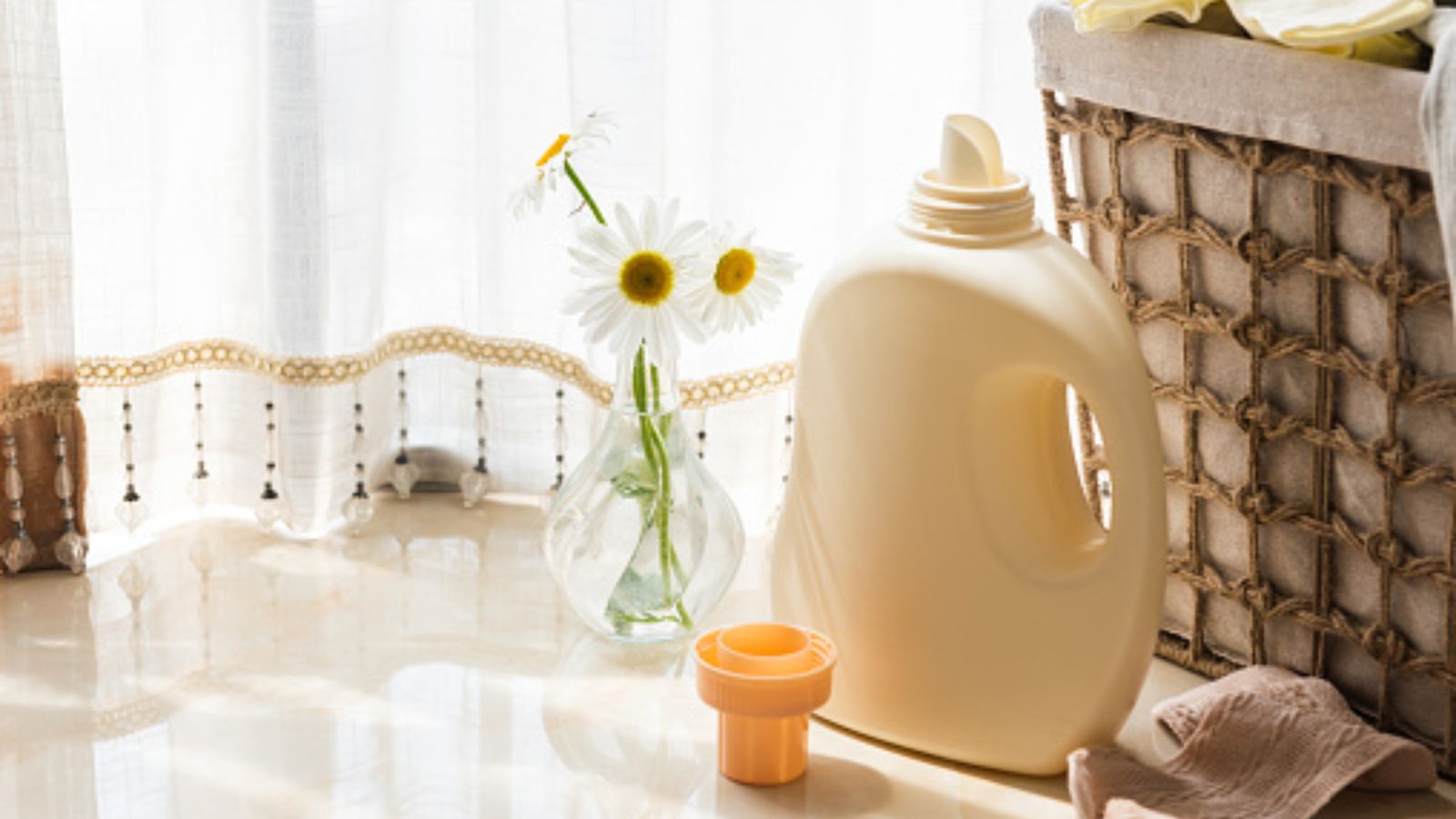You’re probably using this one laundry product wrong – here’s how to use fabric softener in laundry
Keep your clothes in top condition with these golden rules for using fabric conditioner in laundry


Fabric softener is one of those ambiguous laundry products that seems simple to use but can have a lot of repercussions if used incorrectly.
From deteriorating gym clothes to making home furnishings more flammable, it is important to know how and when to use fabric softener when doing laundry to avoid overdoing it. Used correctly, however, it can make even the crunchiest of towels feel and smell fresh.
These are the golden rules laundry experts and fabric care scientists want you to know when using fabric softeners to ensure every laundry load comes out perfectly.
How to use fabric softener in laundry
'The name fabric softener suggests that this unassuming laundry product is the answer to making towels soft again and making a wool sweater less itchy. However, this is not always the case,' explains Rechelle Balanzat, laundry expert and founder of JULIETTE luxury laundry services.
‘Not every wash requires fabric softener,' she explains. 'Instead, it's an additional component that gives your laundry a little something extra. That may be an inviting scent (if you use a scented softener) or cozier, wrinkle-free clothing, blankets, and bed linens.'

Since its founding in 2014, JULIETTE has become a leading laundry service, helping people to track their laundry from picking up to washing to delivery so they can have peace of mind.

Fabric softener works by coating the fabric with a chemical residue to make it more pliant. As a result, too much can make your garment feel greasy – so if you have been piling in the product to soften your clothing and finding the opposite happening, it might be time to cut down on laundry detergents to save your clothing.
'It's not all doom and gloom, however. Use the right amount, and fabric softeners can work in tandem with your detergent to clean and condition clothing and remove static from clothing, much like how shampoo and conditioner clean and soften your hair,' continues Sammy Wang, Senior Scientist at Downy.
Design expertise in your inbox – from inspiring decorating ideas and beautiful celebrity homes to practical gardening advice and shopping round-ups.
‘In addition to conditioning fabrics, fabric softeners used correctly also help to protect clothes during the laundry process,’ she adds. ‘While it may be surprising, the agitation, spinning, and heat of the laundry process can damage clothes at the fiber level. Conditioners help to prevent this.’

Sammy has been with P&G for 11 years and is a science buff who appreciates the technology that goes into products like detergent.
The key to using fabric softener correctly comes down to two things: knowing how much fabric softener to use and which fabrics to use fabric softener for.
When to use fabric softener

‘Fabric softener is not advised when washing items that absorb sweat, water-repellent fabrics, or flame-retardant clothing,’ begins Rechelle Balanzat, laundry expert. This is because the chemical coating blocks the fibers from working correctly – so you should avoid using softener every time you wash towels or whenever you wash microfiber cloths.
‘Softeners should also be avoided on clothing made of elastane,’ Rechelle Balanzat continues. ‘It ruins the spandex material's ability to wick away moisture and damages its ability to stretch and reconfigure.’
Downy April Fresh Liquid Fabric Conditioner | View at Target
Downy Fabric Softener protects your clothes from stretching and fading while adding a signature April Fresh scent to your laundry.
'Fabric softener works best on fibers that are more likely to experience damage in a regular wash cycle – namely natural fibers,' continues Sammy Wang, fabric care scientist. 'Materials such as cotton and linen absorb a lot of water, allowing the swollen fibers to become damaged more easily in the machine. This results in pilling, stretching, and fading,' she explains.
‘Whether woven (like denim) or knit (like t-shirts or sweaters), softeners condition and protect fibers to help prevent damage. I recommend using a product like Downy Fabric Softener, available at Target, because its concentrated conditioning formula adds softness and freshness while also fighting wrinkles, static and stretching. Just always be sure to follow your garment’s laundry symbols in case it specifies otherwise.’
When washing something as delicate as wool, be sure to pick a specific fabric softener or wool conditioner designed to work with this heavier fiber, such as Woolite Delicates Detergent from Amazon. This is the best way to avoid shrinkage and breakages.
How much fabric softener to use

‘Because fabric softener acts by lubricating and conditioning fabric fibers, the amount of fabric softener should be proportional to how much fabric you’re washing,’ begins fabric care scientist Sammy Wang. ‘That’s why it’s important to dose fabric softener based on the load size. Check the product packaging for guidance on how much product to use for your load size.
‘Most fabric softeners will have a measuring cap with markings that correspond to the amount of product to use for your load size.
‘Note that product formulas can vary greatly across brands (some are less concentrated, some are more concentrated, and some are even ultra-concentrated!), so make sure to dose based on your specific product’s guidelines.’
How to use fabric softener in your laundry cycle

The final step to using fabric softener correctly is to add it to the cycle at the right stage to avoid it being washed away – and its softening effects and lingering scent with it.
Rechelle Balanzat, laundry expert, recommends adding the softener during the rinse cycle – the period after the wash cycle, so that it is not added to the fabrics at the same time as the detergent. Most of the best washing machines do this for you so long as you add the right product to the correct segments of your washing machine agitator, or washing machine’s drawer (check your manual to see which is which).
FAQs
Can you add fabric softener directly to laundry?
When adding fabric softener to a laundry load, it is best to add it to the agitator or washing machine drawer so that it can be dispersed evenly at the right part of the cycle (the rinse cycle). Adding it directly to the laundry load means it will not distribute evenly, leading to staining, and it will be largely washed away when the detergent cycle begins, making its addition pointless.
Do you really need fabric softener?
Fabric softener is a great addition to certain laundry loads if you want your laundry to come out smelling fresher, or need certain natural materials to soften up and feel a little less scratchy. That being said, it is not an essential product, and you can easily wash your clothing without it and still have it come out clean and smelling fresh.
'Because fabric softeners coat your clothing, it is important to be wary around sensitive skin,' cautions Rechelle Balanzat, laundry expert. ‘Be sure to purchase a fabric softener that is safe for your skin, as it can help reduce irritation caused by rough clothing.'
Alternatively, you can consider using vinegar in laundry to help soften clothing naturally without the lingering effects of a conditioner, or consider one of the other natural fabric softener alternatives.

Chiana has been at Homes & Gardens for two years and is our resident 'queen' of non-toxic living. She spends most of her time producing content for the Solved section of the website, helping readers get the most out of their homes through clever decluttering, cleaning, and tidying tips. She was named one of Fixr's top home improvement journalists in 2024.
